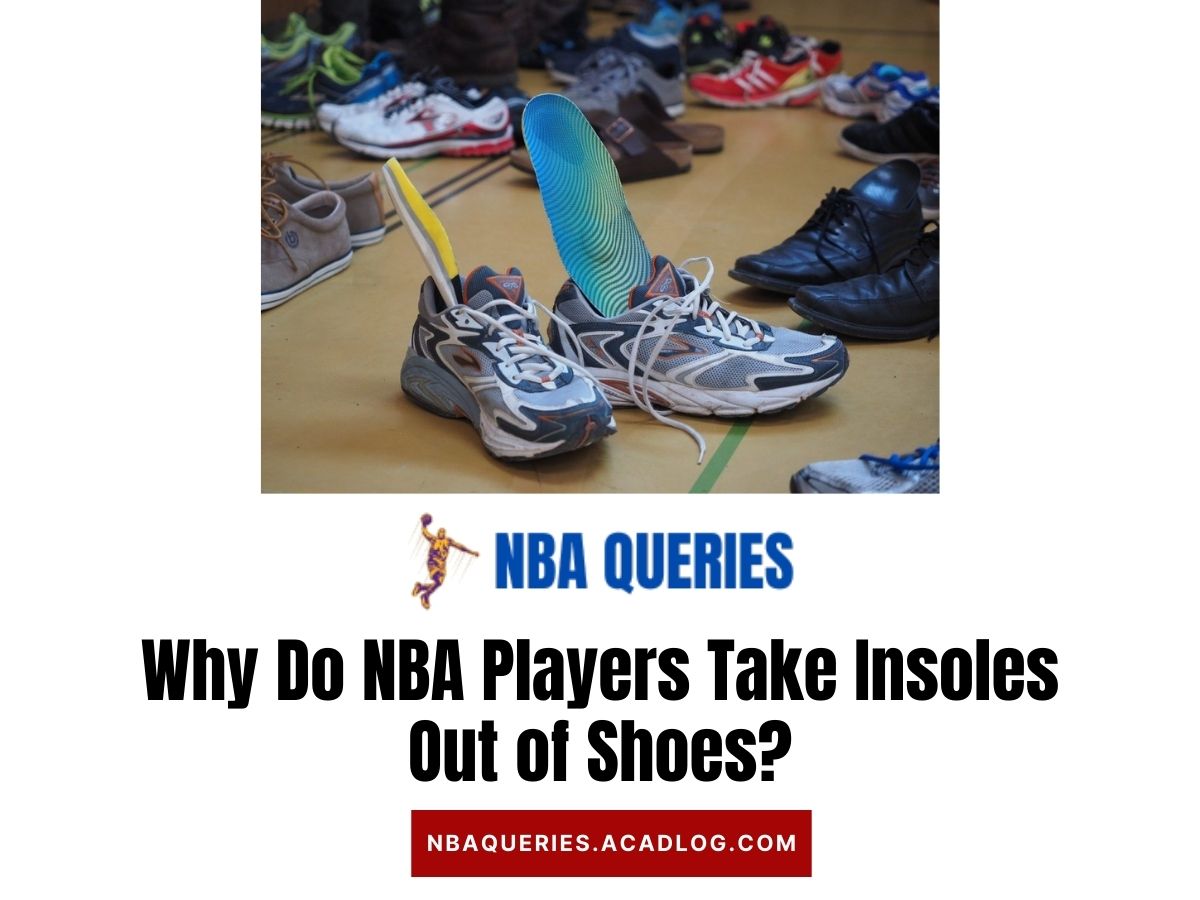NBA players are known for their exceptional skills on the court, but there’s more to their game than meets the eye. One curious habit that often puzzles fans is why many NBA players remove the insoles from their basketball shoes. Is it a superstition? A fashion statement? Or is there a practical reason behind this seemingly odd practice?
In this article, we’ll talk about the aspects of why NBA players take insoles out of their shoes. We’ll explore the reasons behind this common practice and shed light on the factors that drive these athletes to customize their footwear. So, lace up your sneakers and let’s explore the world of insoles in the NBA.
Why Do NBA Players Take Insoles Out of Shoes?
1. Customizations: Tailoring Shoes to Fit
Custom-made shoes are a status symbol in the NBA. Signature footwear endorsed by star players like LeBron James, Kevin Durant, and Stephen Curry isn’t just about style—it’s about performance. These shoes are meticulously designed to enhance a player’s game, taking into account their unique playing style, foot shape, and size.
When NBA players receive custom-made shoes, the insoles are often tailored to fit their specific needs. However, when they decide to give away these prized possessions, removing the insoles becomes essential. Why? Because the new owner may not have the same foot shape or size. By removing the insoles, players ensure that their custom kicks can find a new home without compromising comfort or performance.
Imagine LeBron James, known for his powerful drives to the basket, passing on his custom LeBron sneakers to a lucky fan. Without removing the insoles, those shoes might not fit the recipient’s feet properly. So, NBA players take this extra step to make sure their gifts are wearable and enjoyable for the next owner.
2. Hygiene: Bacteria and Sweat
Basketball is an intense sport, and NBA players work up a serious sweat during games. The insoles of their shoes bear the brunt of this exertion. Over time, sweat, dirt, and bacteria accumulate on the insole surface. Imagine the countless hours of practice, the adrenaline-fueled games, and the post-game celebrations—all leaving their mark on those tiny pads.
Now, consider giving those shoes away. Would you want to receive a pair of sneakers with insoles that have absorbed all that sweat and grime? Probably not. NBA players think the same way. They remove the insoles to maintain hygiene standards. By doing so, they ensure that the new owner won’t be greeted by an unpleasant odor or potentially harmful bacteria.
In the fast-paced world of professional basketball, players don’t have time to deep-clean their shoes before gifting them. Removing the insoles is a practical solution to avoid passing on a less-than-fresh pair of kicks. After all, no one wants to be the recipient of a bacteria-infested shoe.
3. Shoe Size Considerations
NBA players come in all shapes and sizes, and their feet are no exception. Some players have larger-than-average feet, making it challenging for others to wear their shoes comfortably. When players remove the insoles, they create extra space inside the shoe. This adjustment allows the footwear to accommodate a wider range of foot sizes.
Imagine a fan receiving a pair of sneakers worn by Shaquille O’Neal, a legendary center known for his massive shoe size. Without removing the insoles, those shoes might be unwearable for someone with smaller feet. By taking out the insoles, NBA players increase the chances that their shoes will find a happy home, regardless of the recipient’s foot size.
Read:
- Who Has the Biggest Shoe Size in the NBA?
- What Basketball Shoes Do NBA Players Wear?
- What Insoles do NBA Players Use? Most Trusted Insole Brands
4. Performance and Sensation
NBA players are hyper-aware of how their bodies feel during a game. Every cut, jump, and pivot matters. When it comes to insoles, some players prefer the direct contact between their feet and the shoe’s midsole. By removing the insoles, they can feel the court better—almost as if they’re barefoot. This heightened sensation allows them to make split-second decisions with precision.
Think of it like driving a high-performance sports car. You want to feel every nuance of the road to handle turns and acceleration smoothly. NBA players, too, seek that connection with the hardwood. By ditching the insoles, they fine-tune their sensory experience, enhancing their agility and responsiveness.
5. Weight Reduction
In the fast-paced game of basketball, every ounce matters. NBA players are constantly looking for ways to optimize their performance. Removing the insoles lightens the shoe, albeit slightly. While it may seem insignificant, over the course of a game, those saved grams can add up. Imagine sprinting down the court, making quick cuts, and leaping for a dunk. A lighter shoe means less energy expended, allowing players to maintain peak performance throughout the game.
Additionally, lighter shoes reduce fatigue. NBA games are grueling, especially during back-to-back matchups or playoff series. By shedding unnecessary weight, players conserve energy and stay fresher during critical moments. So, when you see an NBA player flying through the air for a highlight-reel slam dunk, remember that their insole-less shoes contribute to that gravity-defying feat.
6. Tradition and Superstition
Sports and superstitions go hand in hand. NBA players are no exception. Some believe that removing insoles brings good luck or wards off injuries. It’s a ritual passed down from generation to generation—a quirky tradition that defies logic but persists nonetheless.
Imagine a rookie joining an NBA team. The veterans share stories about their superstitions, including the insole removal practice. The rookie, eager to fit in and respect tradition, follows suit. Soon, it becomes part of their pre-game routine. Whether it’s psychological or purely symbolic, these rituals create a sense of camaraderie among players.
Last Words
So, the next time you watch an NBA game, pay attention to the players’ footwear. Notice the absence of insoles and appreciate the thought process behind this seemingly minor adjustment.

